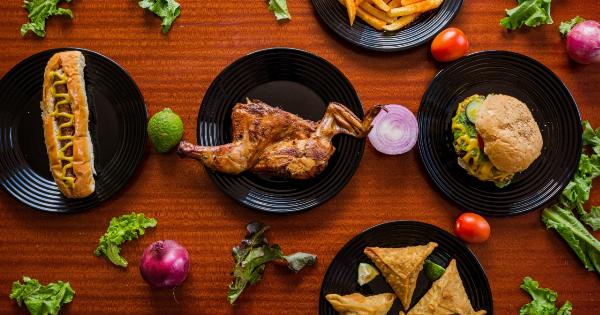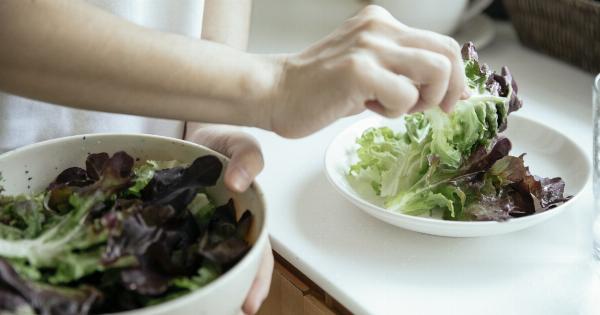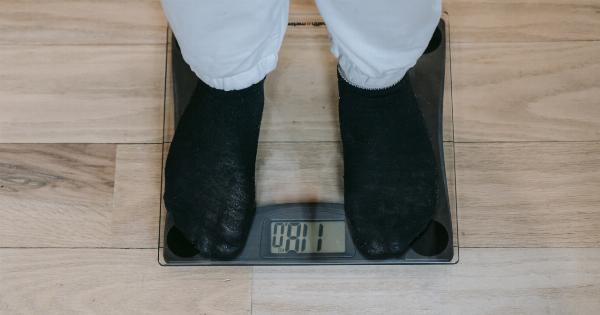Thrombosis is a serious condition that can occur when a blood clot forms in a vein or artery, which can further lead to pulmonary embolism, heart attack or stroke. Maintaining good eating habits is crucial in preventing this condition.
However, certain eating habits can raise the risk of thrombosis, which can lead to serious consequences. In this article, we will discuss some of the eating habits that can potentially put you at risk of thrombosis.
Eating High-Fat Foods
Consuming high-fat foods can lead to high cholesterol levels in the blood.
Foods high in saturated and trans fats like pizza, fried foods, fatty meats, and processed snacks can contribute to the build-up of plaque in the arteries and increase the risk of thrombosis. It is important to limit the consumption of such foods and instead opt for healthier alternatives like lean proteins, vegetables, and fruits.
Excessive Consumption of Salt
Excessive salt in the diet can lead to high blood pressure, which can further damage the arteries and increase the risk of thrombosis. Processed foods, canned items, and packaged snacks, tend to be high in sodium content and should be avoided.
It is recommended that one should consume less than 2300 milligrams of sodium per day. It is best to opt for fresh fruits, vegetables, and low-sodium nuts as healthier alternatives.
Not Consuming Enough Fiber
Fiber is known to be beneficial for reducing the risk of heart disease and thrombosis, as it helps in lowering cholesterol levels in the blood.
Whole foods like fruits, vegetables, and whole grains are high in fiber content and should be included in one’s diet on a regular basis. However, if these foods are not a part of one’s regular diet, one can gradually include them in the form of snacks, salads, or sides to their everyday meals.
Consuming High Sugar Foods
Sugary foods in the diet can lead to the formation of plaque in the arteries, which can further increase the risk of thrombosis.
Added sugars in foods like candy, soft drinks, and baked goods can cause a spike in blood sugar levels and increase inflammation in the body. To avoid such risks, it is recommended to consume natural sugars that come from fruits or choose healthier alternatives like dark chocolate instead of candy.
Excessive Consumption of Alcohol
Excessive alcohol consumption can lead to dehydration, which can contribute to an increase in blood thickness and blood clot formation. Alcohol can also damage the liver, which helps in producing clotting factors that prevent blood clotting.
It is recommended to limit alcohol consumption to one drink per day if you are a woman and two drinks per day if you are a man.
Skipping Meals
Skipping meals, especially breakfast, can increase the risk of thrombosis. When one eats a balanced breakfast in the morning, it helps in maintaining stable blood sugar levels and prevents the over-consumption of food later in the day.
Skipping breakfast can increase the risk of obesity and other related conditions that can contribute to thrombosis.
Consuming too much Red Meat
Consuming too much red meat in the diet can increase the risk of thrombosis. Red meat is high in saturated fat, which can lead to the build-up of plaque in the arteries. This increases the risk of heart disease and stroke.
Instead, one should opt for lean proteins like fish, chicken, and plant-based proteins like beans and legumes which are healthier alternatives.
Not Drinking Enough Water
Not drinking enough water can lead to dehydration which in turn can increase the viscosity of blood and contribute to thrombosis. One should drink at least 2-3 liters of water per day to stay hydrated and to help maintain the normal viscosity of blood.
Excessive Consumption of Caffeine and Energy Drinks
Excessive consumption of caffeinated beverages and energy drinks can cause dehydration and increase the risk of blood clotting. These drinks can also increase the level of stress, which in turn can contribute to an increase in blood pressure levels.
It is best to limit the intake of such drinks or to switch to healthier options like herbal teas or fresh fruit juices.
Not Consuming Enough Vitamins and Minerals
Vitamins like Vitamin K, E, and B6 are important in the production of clotting factors and antioxidants which help in preventing thrombosis.
Foods that are high in vitamins and minerals like nuts, seeds, and green leafy vegetables should be included in the diet in moderate amounts. However, if one is experiencing a vitamin deficiency, it is best to consult a doctor or healthcare professional to determine the best course of action.
Conclusion
Thrombosis is a serious condition that can have fatal consequences if not prevented. Maintaining a healthy diet can help in reducing the risk of thrombosis and related conditions.
To reduce these risks, one should limit the consumption of high-fat foods, salt, sugar, caffeine, and alcohol. It is recommended to include more fiber, water, and vitamins in one’s regular diet. By following these healthy eating habits, one can greatly reduce the risk of thrombosis and lead a healthier lifestyle.





























